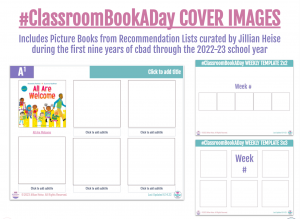
Title: THE CARPENTER’S GIFT: A Christmas Tale about the Rockefeller Center Tree
Author: David Rubel, illustrated by Jim LeMarche
Publisher: Random House Books for Young Readers
Release Date: September 27, 2011
Number of Pages: 48
This new classic
Christmas gift book “brings together two great traditions: the
Rockefeller Center Christmas tree and the neighbor-helping-neighbor
program of Habitat for Humanity.” Opening in Depression-era New York
City, The Carpenter’s Gift tells the story of eight-year-old Henry and
his father selling Christmas trees. They give a Christmas tree to
construction workers building Rockefeller Center and celebrate together.
Through the kindness of the construction workers and neighbors, Henry
gets his wish for a nice, warm home to replace his family’s drafty
shack. He plants a pinecone from that first Rockefeller Center Tree. As
an old man, Henry repays the gift by donating the enormous tree that has
grown from that pinecone. After bringing joy to thousands as the
Rockefeller Center tree, its wood will be used to build a home for
another family in need.Written by children’s nonfiction author
David Rubel in collaboration with Habitat for Humanity. Gorgeous
illustrations crafted by Jim LaMarche.
Behind the Scenes: The Making of THE CARPENTER’S GIFT
sometimes think the two books are linked. They’re both about Habitat, right? But that
isn’t how I see them. The first book I wrote is about Habitat and the people who work
with it; but The Carpenter’s Gift is about something else. It’s about me, and maybe it’s
about you, too.
My association with Habitat began in 2008, when I received a call out of the blue asking
me whether I’d like to collaborate on a book celebrating the twenty-fifth anniversary of
the annual Jimmy and Rosalynn Carter Work Project. I had heard of Habitat, of course,
but I really knew very little about the organization beyond its association with housing.
As a presidential historian, however, I knew quite a bit about Jimmy Carter, and it took
me only about thirty seconds to recover and say yes. The result was If I Had a Hammer:
Stories of Building Homes and Hope with Habitat for Humanity, published in the fall of
2009.
In researching If I Had a Hammer, I had an important early decision to make: should I
volunteer as part of my research or not? After some back-and-forthing, I decided against
volunteering because I didn’t want my experience to color the stories that other people
were telling me about their experiences with Habitat. So I waited until after the book
was written before traveling to Chiang Mai, Thailand, to volunteer with the 2009 Carter
Work Project. Having talked to so many people about the Carter builds, I thought I knew
what to expect. But there is still a great difference between listening to a description of a
rollercoaster ride and taking the plunge oneself.
It turned out to be a good thing that I postponed volunteering, because my experience in
Thailand gave me a lot to think about. Working hard for ten or more hours a day with two
thousand other people, building a community of eighty-two homes that didn’t exist the
week before, is so thrilling while it’s happening that it inevitably raises the question, Why
can’t my life be like this every day?
Returning from Thailand, I took advantage of the Thanksgiving break to collapse on the
living room couch for a few days. While I dozed, my young children watched holiday
television. One night, they turned to the lighting of the Rockefeller Center Christmas tree.
Having grown up in Manhattan, I’d visited the tree many times, and from my Habitat
research I knew that since 2007, Tishman Speyer, the owners of Rockefeller Center, had
donated lumber milled from each year’s tree to build a Habitat home. As I watched the
lighting with my kids, I thought about this remarkable gift and realized that it could be
the touchstone for a different kind of story about Habitat—one that expressed what I had
thought and felt in Thailand.
When I interviewed President Carter for If I Had a Hammer, he told me something that
has stuck with me ever since. He said that the distance between the haves and the have-
nots in our society is so great that no single person can span it by himself. The president
called this gap a “chasm,” and he said that the only way to cross it was over a bridge. He
started the Carter Work Project, he said, because Habitat provides exactly this kind of
bridge, allowing people from both sides to come together and connect with one another in
President Carter’s insight helped me to make sense of my own experience with Habitat
and thereby inspired The Carpenter’s Gift, which is fundamentally a story about giving
and receiving. Material resources change hands in the story, and they’re certainly
important, but much more important are the feelings that pass between the characters.
For me, the great joy of writing is the opportunity it gives me to express myself. Because
I write primarily history, most of what I express in my work are ideas—intellectual
constructs that attempt to make sense of what has happened and explain why events tend
to take the course they do. With The Carpenter’s Gift, however, I had a chance to express
something else—a feeling, which is altogether different from an idea.
I’ve often thought that people become attached to books for one of two reasons: either
the book teaches them something they don’t know, or it reminds them of something they
already know but have forgotten. Whichever is true, beloved books inspire readers to
become better people. It’s my hope that The Carpenter’s Gift can have a similar effect,
helping young readers learn something they may not know about giving and receiving
and helping older readers remember something they may have forgotten.

Don’t forget to check out the rest of the stops on the Holiday Blog Tour!

























One of my favorite traditions is going out with my husband and boys and cutting down our Christmas tree. It is something we make sure to do every single year. Thanks for the giveaway! I just shared The Christmas Tugboat on my blog, which has a similar topic!
My favorite part of Christmas each year is putting up and decorating the Christmas tree. Each ornament holds a memory. Our nativity set was handmade by my mother in a ceramics class. And there is just something special about that moment when the star is placed at the top.
Every year, the Saturday after Thanksgiving we haul out the box of Christmas books we have packed away all year. I let the girls practice wrapping them, and we unwrap one every day during December – a literature-infused advent activity!
oops – I commented before I knew the topic for the giveaway. One of my favorite traditions is giving my daughters a Christmas picture book and a pair of pajamas on Christmas Eve. Since we went to NYC not too long ago, this would make the perfect gift!
This looks like a beautiful book, and I'd love to share it with my students!
Woaaaah such a lovely book :O